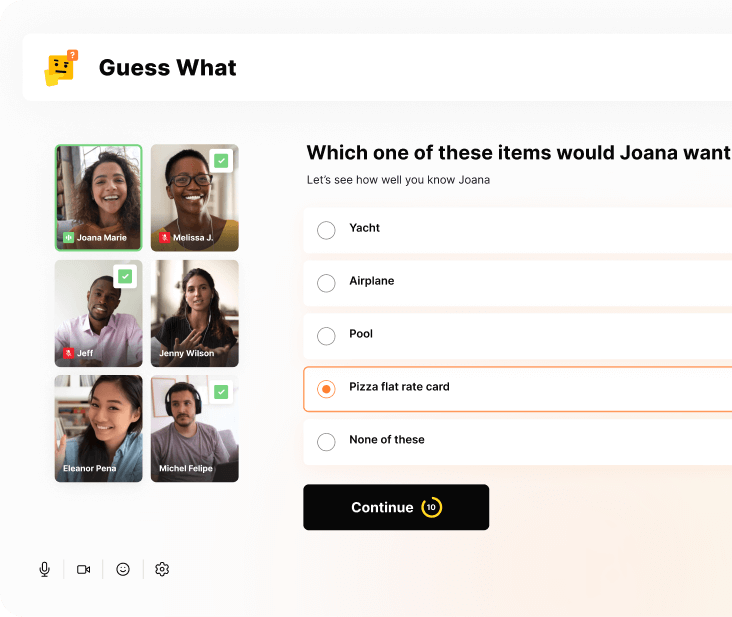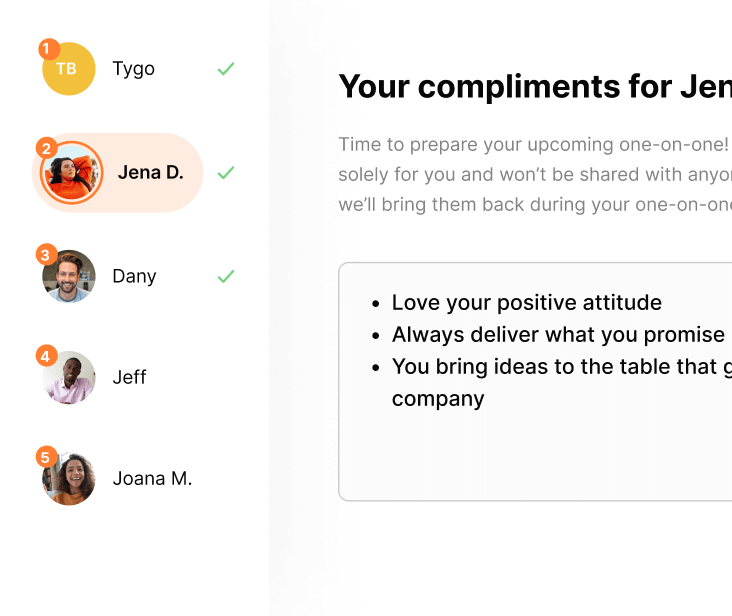Back to Blog
What makes your employees tick? 4 employee motivation types
When companies start trying to boost employee engagement, it makes sense to dig into what makes employees tick. What changes in their environment really impact how they behave? If you threaten to dock someone’s pay, you’ll get a different reaction than if you start using more team building activities.
Statistics show that strong employee engagement requires a multi-faceted approach. Different motivation types can provide you with different tools.
4 types of employee motivation
Research distinguishes between four main types of motivation that show up in most employee motivation models. A given motivational choice will be either intrinsic or extrinsic and either positive or negative.
1. Intrinsic motivation
Many people see the best motivation of all as intrinsic. This is true at work because studies have shown intrinsic motivation to be a better long-term predictor of workplace success. Intrinsic motivation is what a person naturally is inclined to do, even without others wanting them to do it.
People talk about intrinsic motivation as their internal desire to be of use.
It often comes at the intersection of:
- What you find most enjoyable.
- What you are very skilled at doing.
- What fits your values or goals long-term.
As an employer, you aren’t responsible for creating intrinsic motivation. Instead, you can notice it and take advantage of it.
For example, maybe you conduct a survey on your employee engagement platform and discover one employee loves project management more than any other. Perhaps project management was originally only a small part of their role. As a manager, you should create opportunities for this employee to take on new project management when possible. Giving these tasks to someone who loves them and does them well can help drive employee retention.
Share fun facts and bond with a team quiz
Have your participants choose from a list of questions they’d like their coworkers to answer about them, before watching as they guess the right answer.
01. Yes
share-fun-facts-and-bond-with-a-team-quiz

Run a guided recognition activity
Have your participants choose from a list of questions they’d like their coworkers to answer about them, before watching as they guess the right answer.
01. Yes
run-a-guided-recognition-activity

Organize a virtual cooking class
Hire a professional chef to help your team cook a delicious lunch or dinner. May be difficult for co-workers with families. To find providers and get tips, read our blog about virtual cooking classes.
02. No
organize-a-virtual-cooking-class

Hire a stand-up comedian
Have your participants choose from a list of questions they’d like their coworkers to answer about them, before watching as they guess the right answer.
02. No
hire-a-stand-up-comedian

No items found
No items found
Table of contents
When companies start trying to boost employee engagement, it makes sense to dig into what makes employees tick. What changes in their environment really impact how they behave? If you threaten to dock someone’s pay, you’ll get a different reaction than if you start using more team building activities.
Statistics show that strong employee engagement requires a multi-faceted approach. Different motivation types can provide you with different tools.
4 types of employee motivation
Research distinguishes between four main types of motivation that show up in most employee motivation models. A given motivational choice will be either intrinsic or extrinsic and either positive or negative.
1. Intrinsic motivation
Many people see the best motivation of all as intrinsic. This is true at work because studies have shown intrinsic motivation to be a better long-term predictor of workplace success. Intrinsic motivation is what a person naturally is inclined to do, even without others wanting them to do it.
People talk about intrinsic motivation as their internal desire to be of use.
It often comes at the intersection of:
- What you find most enjoyable.
- What you are very skilled at doing.
- What fits your values or goals long-term.
As an employer, you aren’t responsible for creating intrinsic motivation. Instead, you can notice it and take advantage of it.
For example, maybe you conduct a survey on your employee engagement platform and discover one employee loves project management more than any other. Perhaps project management was originally only a small part of their role. As a manager, you should create opportunities for this employee to take on new project management when possible. Giving these tasks to someone who loves them and does them well can help drive employee retention.
2. Extrinsic motivation
Extrinsic motivation is a broad category of all the external factors that motivate people.
They include both positive and negative factors, as we’ll discuss further. Extrinsic motivation isn’t a bad thing. After all, most people won’t work full-time for free just because they love the work intrinsically. Some extrinsic motivation, like pay and benefits, is needed.
In a workplace, it’s helpful to assume extrinsic motivations exist throughout your company. The key is determining how your employees are being pushed and pulled by these external factors.
For example, team building activities are an external prompt to create more connection at work, producing better team functionality. A rigid clock-in/clock-out system might motivate timeliness. It could also create stressed, nervous employees.
Drawing the connection between an external factor and how it motivates employees helps you make useful changes over time. You’ll need to combine what you learn from employee meetings and surveys as you make changes to the workplace with trends you notice in your team’s productivity and morale.
3. Positive motivation
Positive motivation involves any positive factor that pulls a person toward a good outcome. Positive motivation works because incentives draw people in, making them want to do good work.
Examples of positive motivation at work include bonuses for good performance. Praise from coworkers can motivate your employees, even if it is just a quick bit of gratitude in your employee recognition app. Ideally, consistent positive factors at work help employers retain their employees long-term.
4. Negative motivation
Negative motivation uses bad outcomes to steer people away from certain choices.
Following the idea of offering “the carrot or the stick”, the carrot is a nice incentive that positively motivates. The stick, presumably used to poke or hit, is the negative motivation.
At work, negative motivation is used when someone’s performance is low. A performance improvement plan, or PIP, can be a negative motivator to improve one’s performance. The negative outcome would be losing your job, and the plan outlines a way for employees to avoid the bad outcome.
Motivational theories
Choosing between the types of employee motivation involves deciding how you most want to motivate your employees. For this, widely-held employee motivation strategies provide good guidance. These employee motivation theories help determine what kind of motivation to use in a given circumstance.
- ERG Theory. This theory states that all people are motivated by three important concepts. These are continuing their existence, creating relatedness, and pursuing growth.
- Two-Factor Theory. This theory says people are motivated by two factors. These are hygiene factors (elements of the work environment outside the job) and motivators (the parts of the job itself that they like or dislike).
- Acquired-Needs Theory. This theory says that each person has dominant needs they are motivated to fulfill. Some people have a need for achievement, others for affiliation, and a third group for power.
Subscribe to get our latest updates
Subscribe to get our latest updates
.webp)



.jpg)

.jpg)